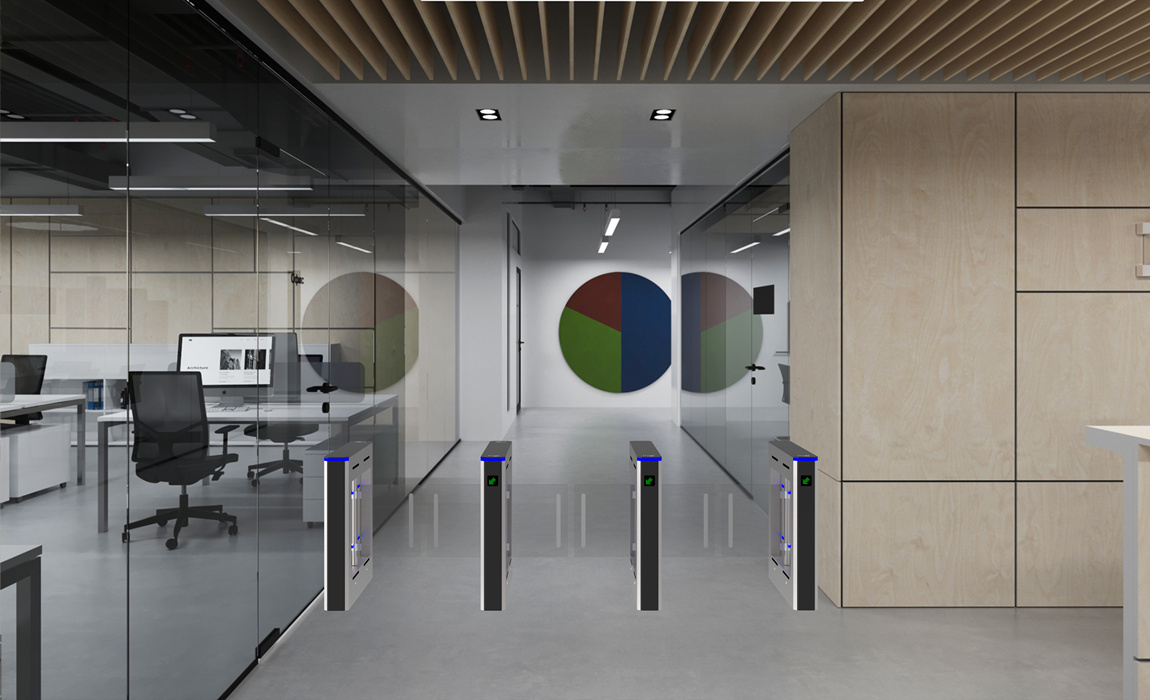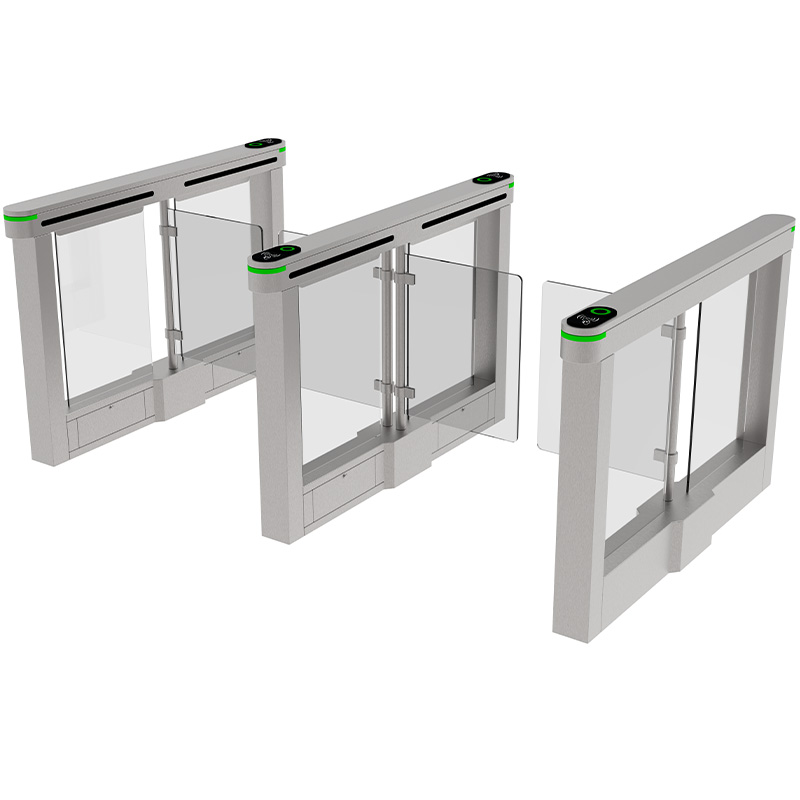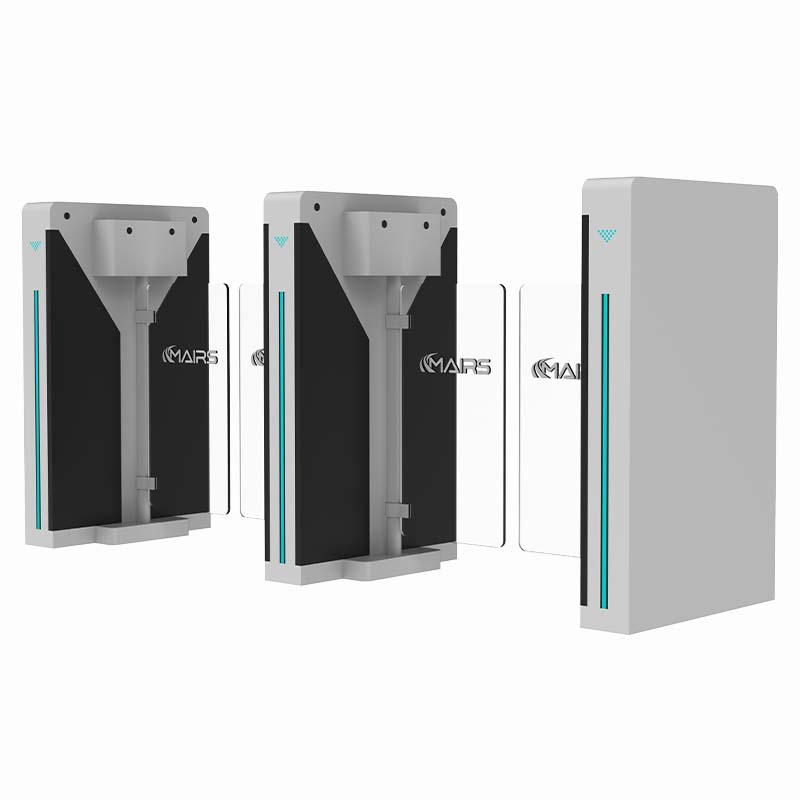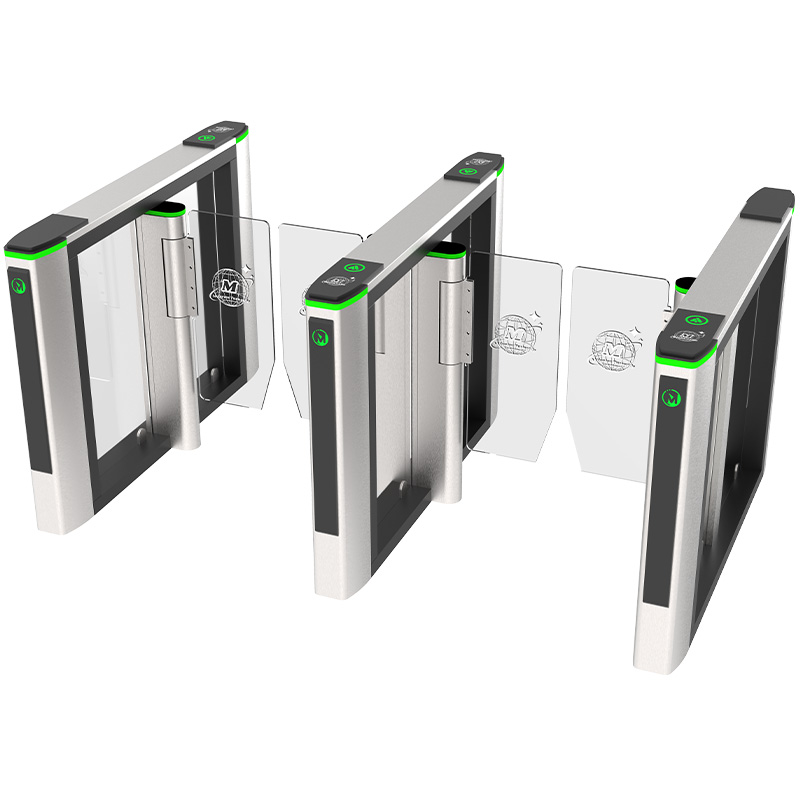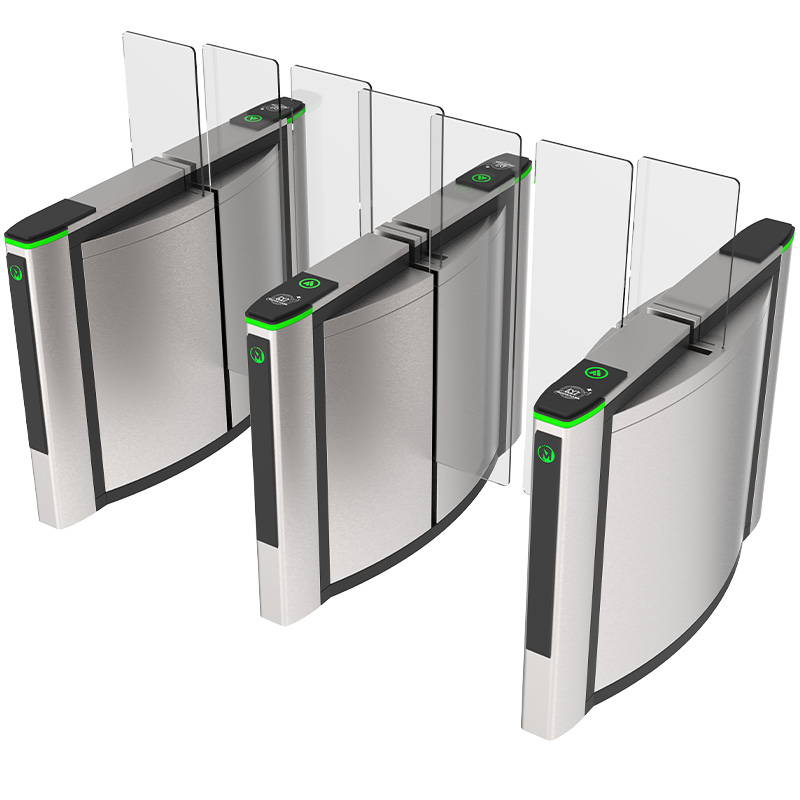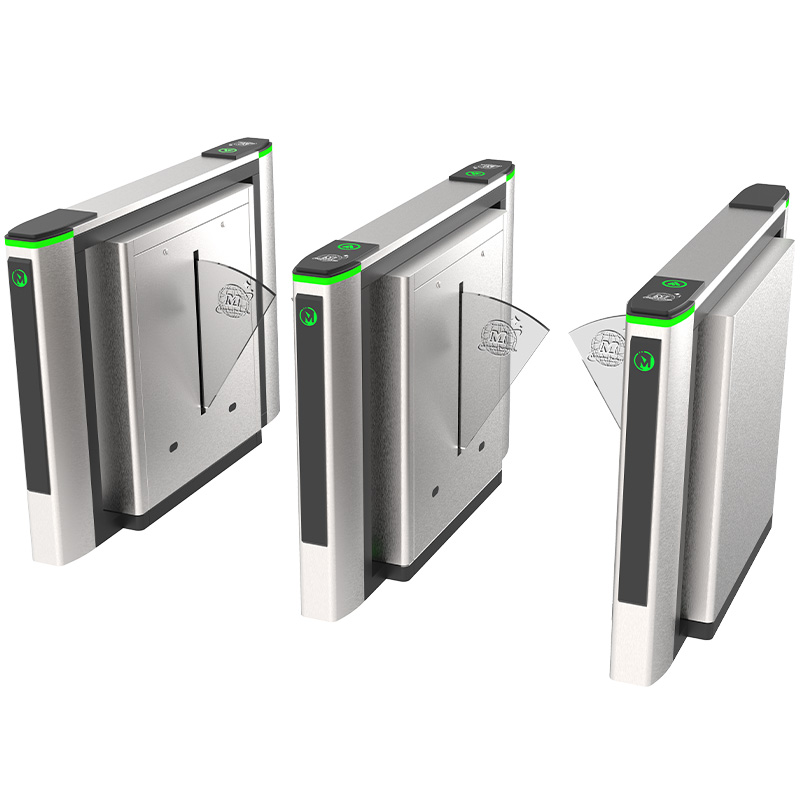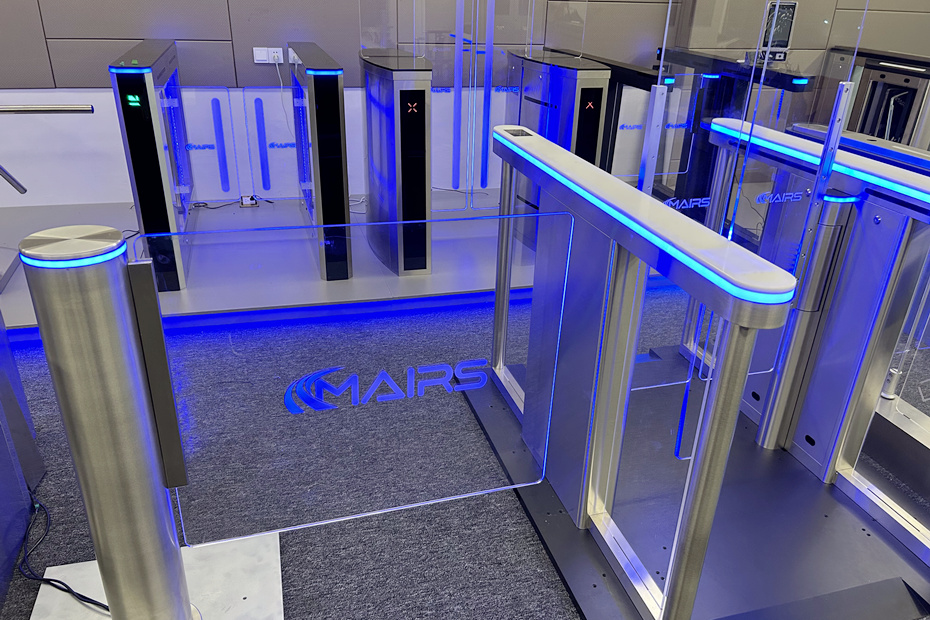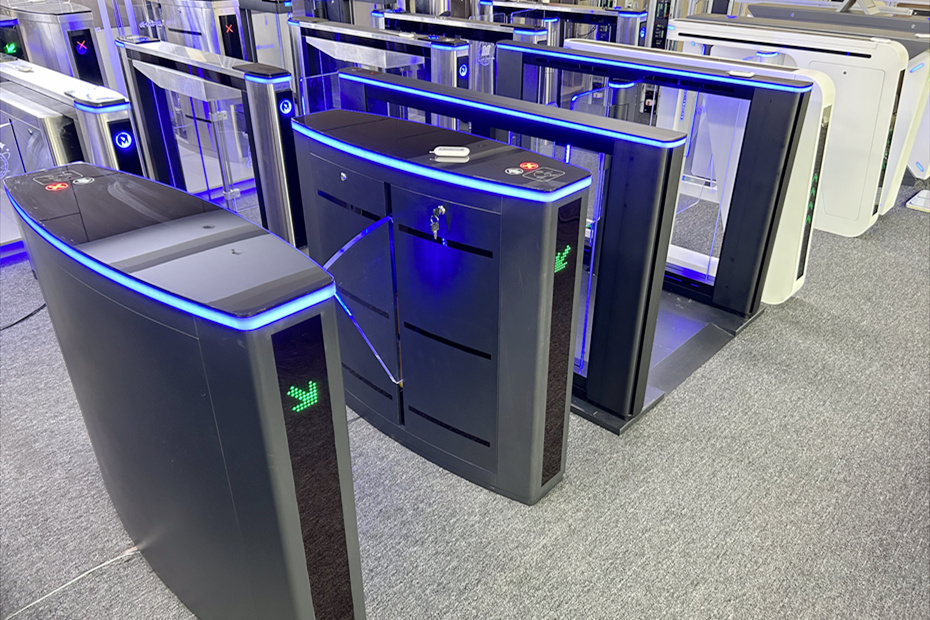Last updated on: March 10th, 2024 15:02 pm
Optical Turnstiles Definition:
Optical turnstiles are a type of advanced access control turnstile gate device that uses optical sensors and barriers to detect and manage pedestrian entry and exit, aiming to regulate pedestrian traffic while providing high safety measures. It employs optical sensors and barriers to ensure controlled access based on authentication methods such as card readers or biometric systems.
Optical turnstiles integrate optical sensors, card reader technology, facial recognition technology, and QR code technology, these turnstiles rapidly process pedestrian traffic, swiftly verifying entry credentials. These advanced electronic optical turnstiles are at the forefront of technology and can manage one-way or bi-directional access control. Optical turnstiles are a safer security turnstile solution.
Optical swing turnstiles are an ideal choice for spaces requiring an open and modern appearance. They contribute to speeding up the entry process and enhancing the overall flow of pedestrian traffic.
How does a optical turnstile work?
How does a optical turnstile work? The infrared sensors configured inside the optical turnstile gate play a crucial role.
Infrared sensors are usually infrared tubes with emission and reception functions. It consists of a transmitter, receiver, and filter.
The transmitter emits infrared light, and the receiver receives the reflected signal of the light. When pedestrians or objects enter the sensing range of the optical turnstile gate, the transmitter of the infrared sensor will emit a beam of infrared radiation. These infrared rays will be reflected back to the sensor receiver by pedestrians or objects. The receiver will convert the received signal into an electrical signal and filter it through a filter. Ultimately, the signal will be transmitted to the control circuit for processing.
Here is a detailed introduction:
When pedestrians or objects enter the sensing range of the gate, the infrared transmitter will emit a beam of infrared radiation.
These infrared rays will be reflected by objects or pedestrians and then received by the receiver. The receiver will convert the received signal into an electrical signal and transmit it to the control circuit.
In the control circuit, these signals are processed through amplification, identification, counting, and comparison, and ultimately converted into signals to control the opening and closing of the optical turnstile gate.
For some complex systems, additional calculations, protection, and self diagnosis operations may be required.
In the control circuit, an important part is the output circuit. It is responsible for converting the processed signal into the signal required for the optical turnstile gate control system, and controlling the opening and closing of the optical turnstile gate through the motor drive system.
In addition, the infrared sensing system of the gate also includes a targeted infrared sensor, which detects objects through an infrared beam between the transmitter and receiver. When an object passes through, it will block some or all of the light, causing the receiver to receive different signals and control the opening or closing of the optical turnstile gate.
If you’re looking for a optical turnstile solutions, please contact us. Our experienced designers ensure professional designs, minimizing your time, communication costs, product design costs, and solution costs, offering an enhanced turnstile gate usage experience.
[contact-form-7 id=”44422″ title=”Contact_ How much”]
Why use optical technology?
Why does the pedestrian turnstile gate use optical infrared sensor technology?
1. The system responds quickly. Infrared sensors have the characteristics of high sensitivity and high response speed, which can quickly sense the passage of personnel and perform fast gate opening or closing operations.
2. High reliability. Infrared sensors have the characteristics of high reliability and long lifespan, which are less prone to malfunctions and misoperations, ensuring the normal operation of the turnstile access control system.
3. Easy installation. The installation of infrared sensors is very simple, just fix the sensor in the agreed position, without the need for overly complex engineering construction.
Optical Turnstiles Components:
Optical turnstiles typically feature sleek and modern designs, often constructed with transparent materials such as glass or acrylic.
The main components of an optical turnstile include optical sensors, barrier arms, control panel. The other components are no different from ordinary turnstiles. If you are interested, you can check out our other article: turnstile parts & turnstile components
Optical sensors: These sensors detect the presence of individuals and trigger the opening or closing of barriers.
Barrier arms: These arms, often made of glass or acrylic, act as barriers to control pedestrian flow.
Control panel: This panel houses the electronics and controls of the turnstile, including access control integration.

Optical Turnstiles Functions:
Sensor-Controlled Passage:
The passage lane is governed by the logic of sensors installed within the optical turnstile. Access is granted only when the turnstile receives an open signal, allowing individuals to pass through freely. If the turnstile does not receive the open signal, the sensors trigger an alarm, alerting security personnel of potential unauthorized access attempts.
Tailgating Prevention:
Optical swing turnstiles are highly effective in preventing tailgating, wherein an unauthorized individual attempt to follow closely behind an authenticated user. If someone attempts to access the passage with a valid card but is not authorized, the alarm system is activated, alerting security personnel to the breach.
Aesthetics and Efficiency:
Optical turnstiles are ideal for spaces that require an open and modern look, as they feature sleek designs often made of transparent materials. Sleek and modern design enhances architectural aesthetics.
These turnstiles contribute to a streamlined entry process, enhancing efficiency and reducing congestion.
They are capable of facilitating bi-directional passage, accommodating traffic in both directions.
Accurate Sensor Technology:
Optical sensors provide accurate detection and control of pedestrian traffic.
Optical turnstiles commonly utilize opposite photoelectric sensors, which accurately detect the presence of individuals. Multiple groups of radiation sensors are strategically positioned throughout the turnstile to sense movement in both directions.
Sensors are typically located at the entrance, along the wing rods, and at the exit of the gate. To ensure precise sensing, some optical swing turnstiles feature sensors installed at different heights within each component.
Some optical swing turnstiles install sensors at different heights across various parts, enhancing the accuracy of the sensing mechanism.
Customization Options:
Optical turnstiles offer various customization options to suit different security and architectural requirements.
These options may include adjustable barrier heights, LED lighting effects, and integration with surveillance cameras or alarm systems.
Optical swing turnstiles come in various designs, allowing customization to meet aesthetic and functional preferences.
Options for different types, materials, finishes, and branding.
Throughput:
Optical swing turnstiles are known for their relatively high throughput, facilitating the smooth flow of pedestrian traffic.
Access Control Integration:
Optical swing turnstiles integrate seamlessly with access control systems to verify the credentials of individuals seeking entry.
Common methods of authentication include RFID cards, proximity cards, biometric scans (such as fingerprint or facial recognition), PIN codes, or a combination of these.
Upon successful authentication, the access control system signals the optical turnstile to allow passage.

Optical Turnstiles Applications:
Optical turnstiles are commonly deployed in a wide range of environments where controlled access and high-security measures are essential.
Examples of applications include corporate offices, government buildings, airports, public transportation hubs, stadiums, and event venues.
Optical Turnstiles Considerations:
Optical turnstiles may have higher upfront costs compared to traditional mechanical turnstiles.
Maintenance and servicing requirements should be considered to ensure optimal performance and longevity.
Optical turnstiles are popular due to their sleek design, efficient functionality, and ability to blend well with various architectural settings. They offer an effective solution for organizations seeking controlled access with a modern and aesthetically pleasing entry point. Their advanced technology and sleek design make them a popular choice for modern access control applications.
Overall, optical turnstiles offer an advanced, sophisticated, secure, and reliable solution for access control, combining advanced sensor technology with sleek design aesthetics. It not only ensures controlled access but also contributes to the overall aesthetic and operational efficiency of a space. Their ability to prevent tailgating and efficiently manage pedestrian flow makes them a preferred choice for various environments, from corporate offices to public transit stations.

